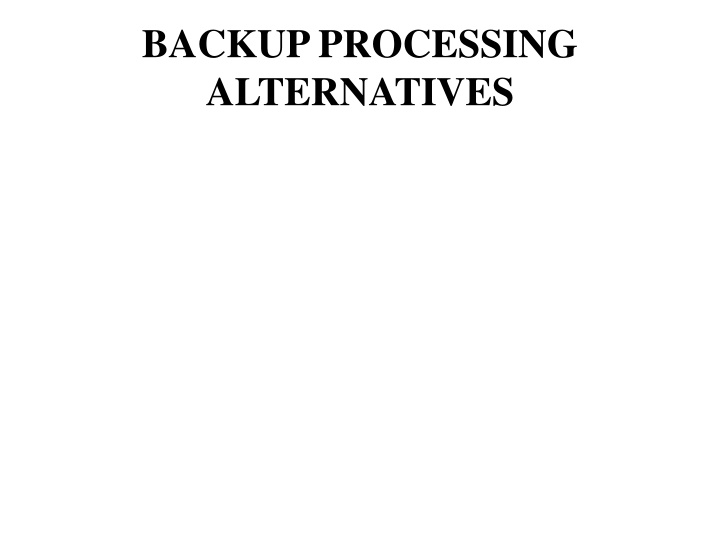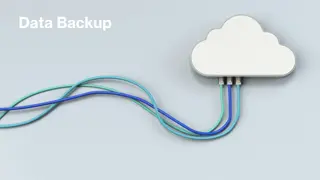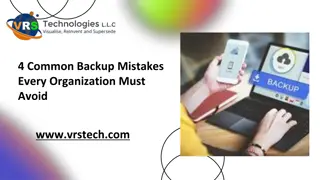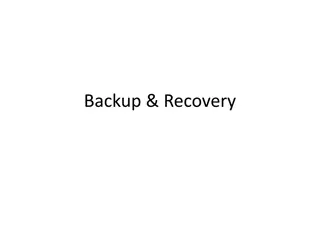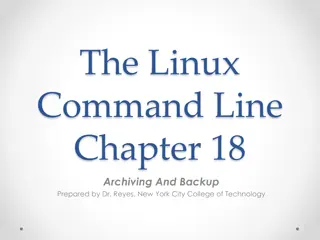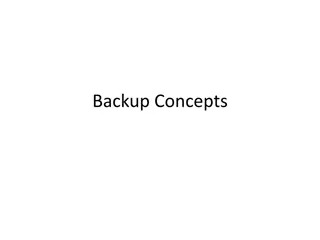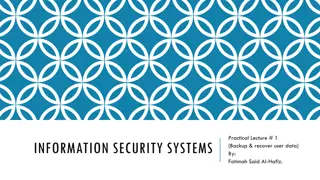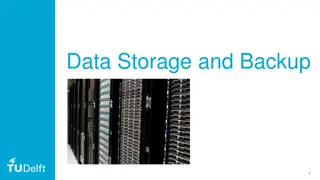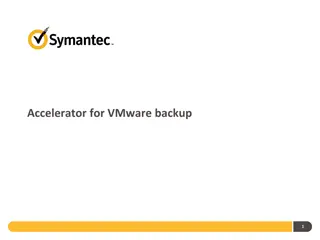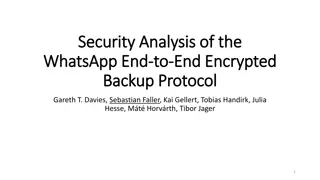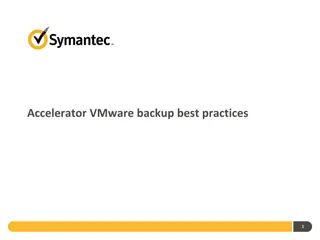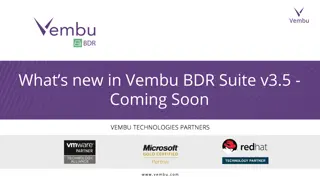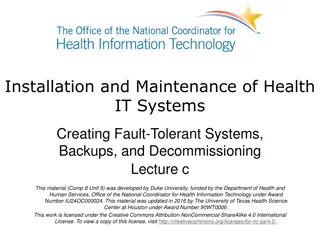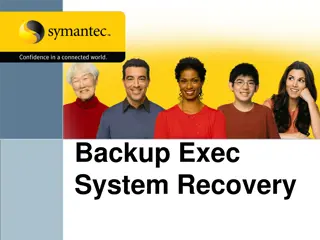Developing a Successful Backup Processing Strategy
This unit explores backup processing alternatives, contingency planning, and the importance of selecting and implementing alternate processing support in advance. It emphasizes the need for well-documented strategies to ensure rapid recovery from disruptions in data processing, along with identifying potential threats and protecting critical applications.
Uploaded on Sep 07, 2024 | 1 Views
Download Presentation

Please find below an Image/Link to download the presentation.
The content on the website is provided AS IS for your information and personal use only. It may not be sold, licensed, or shared on other websites without obtaining consent from the author.If you encounter any issues during the download, it is possible that the publisher has removed the file from their server.
You are allowed to download the files provided on this website for personal or commercial use, subject to the condition that they are used lawfully. All files are the property of their respective owners.
The content on the website is provided AS IS for your information and personal use only. It may not be sold, licensed, or shared on other websites without obtaining consent from the author.
E N D
Presentation Transcript
BACKUP PROCESSING ALTERNATIVES
for an alternative centre. This unit describes the alternatives that are currently available and provide guidance on developing selection criteria.
preparation of procedures that will facilitate a timely recovery from events that disrupt data processing and recovery action procedures.
requirements. These document specifies requirement categories that planner may use as a guide for defining site-specific requirements. This requirement will serve as criteria for selecting the most suitable alternative processing support.
select alternative processing support in advance. A well documented, thoroughly tested and workable strategy will help reduce long delays and hasten a rapid return to normal operations. Depending on the size of an organization, a workable capability can affect successful recovery from disaster.
implementation, testing and certification of an alternate processing strategy. He should also recognize the important of a workable, cost effective alternate processing strategy.
A summary of the action necessary to develop a successful backup processing strategy is as follows:
process of identifying, either quantitatively or qualitatively, the impact of potential threats to an organization s operating computer facilities.
of applications which support major business functions will help reduce delays and hasten the prompt start of critical processing. These critical applications and software should be sufficiently protected against loss.
organization. This hasten implementation with fewer delays and loses that can result in interrupt data processing may be significantly reduced.
Defined critical time delays that can be tolerated without degrading the mission.
Store critical data, programs and documentation off site.
Ensure the backup site can provide sufficient computer resources to handle the critical work load.
Ensure the site being considered will be available within sufficient time to meet processing schedules.
Ensure the backup site can provide a compatible hardware configuration.
Ensure the operation system software at the alternate facility is compatible.
Ensure the alternate site can provide enough space to accommodate essential staff.
Ensure the adequacy of the environmental systems at the alternate facility.
Determined telecommunications requirement, ensuring minimal communications support can be provided by the alternate facility.
Evaluate the location of the backup facility, planning resolutions for possible problems that can occur when using a remote facility.
Develop a comprehensive test plan ensuring the backup facility will allow adequate time for testing.
Ensure that security controls at the alternate facility provide a sufficient level of protection for data and equipment.
Understand all pricing agreements, allocating funds for backup supporting advance of an emergency.
Ensure that all agreements are well documented.
requirements and criteria for evaluating alternate processing methods. This section describes the alternatives and discusses the criterion that is significant for each alternative.
All this backup alternatives help to recover from disaster and prevent the occurrence of such. The alternatives described in this section include:
Membership in shared contingency facilities
Separate facilities under the same management
(i) Passive Approach Method
hardware, software and prepare for the physical facilities set up. On delivery, the equipments will be used to establish another centre.
(ii) Application Backup
The Company goes into agreement with a vendor who will supply the detail computing facilities to establish another one.
(iii) Service Bureaus
production processing. In a time share environment, supported by batch and interactive programming systems. Transmission of work to the service bureaus is by means of telecommunications.
A contract is generally negotiated which requires subscribers to pay a monthly membership fee for a predetermined period of time.
